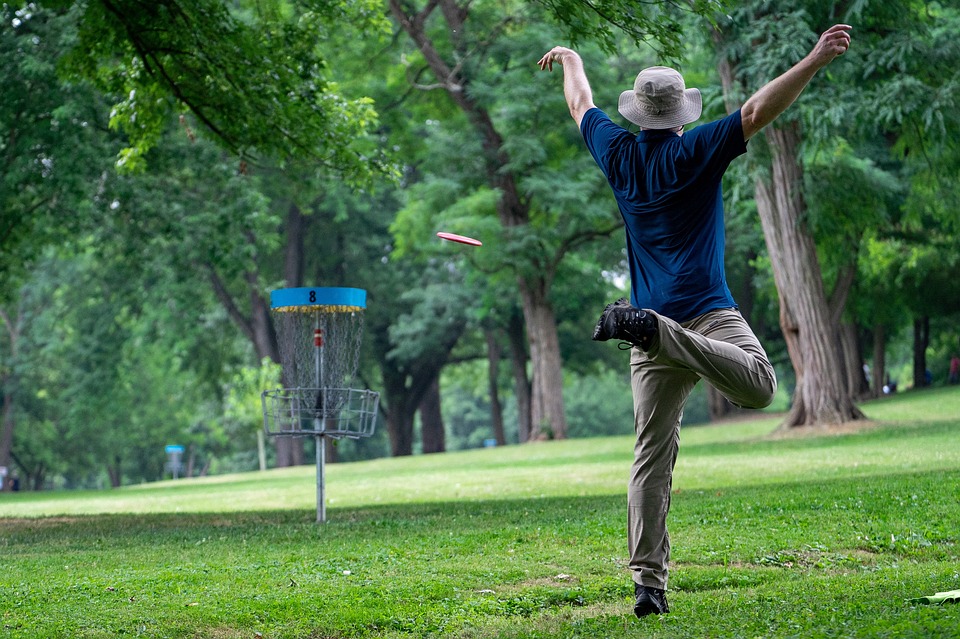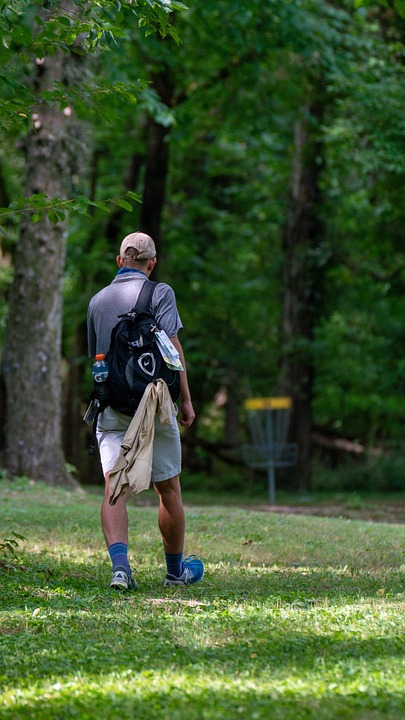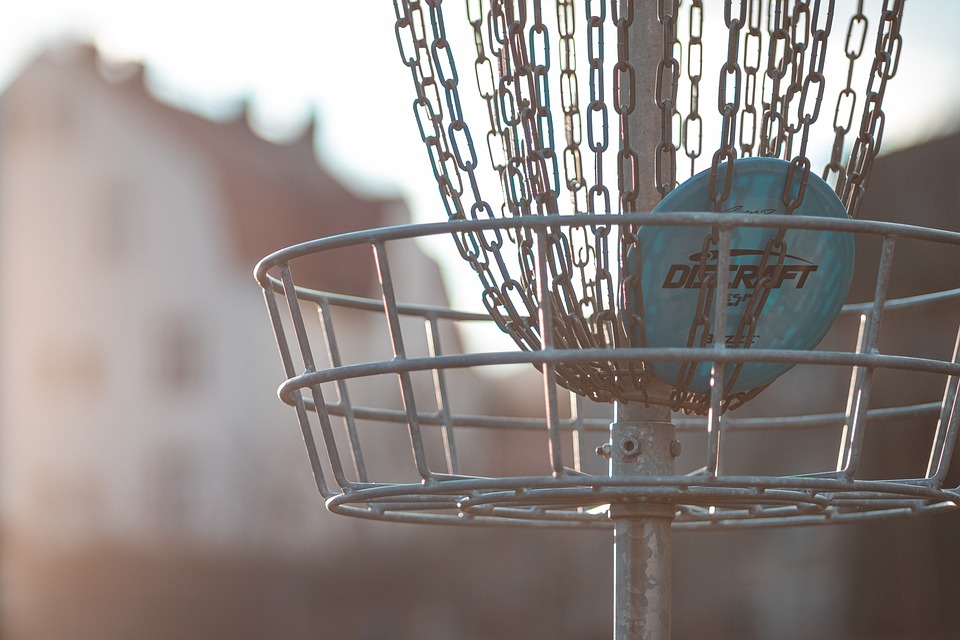Disc Golf – Throwing Overhand Shots
Sometimes when playing Disc Golf, you encounter a situation that requires a different kind of throwing style. So what type of shot should you choose in these situations? The answer is an overhand shot.
There are two types of overhand throws. They are called the Thumber and the Tomohawk. These shots are perfect when you are blocked by low trees or bushes, or even for getting across water hazards or sand traps. The mechanics of the throw are the same but the grip of each is different. Both throws are thrown overhand like a baseball or softball player would throw from the outfield to home plate.
The Thumber starts with the disc vertical in your hand on the webbing between the thumb and index finger. The top of the disc is facing away from you when you hold the disc above your head. Your thumb wraps around the rim of the disc, and you make a fist around the other side of the disc with the rest of your fingers. When you throw the disc, it will barrel roll one direction and then come back the other way. This means you have to compensate your aim a little based on the direction of roll. The direction is right for a right handed throw, left for a left handed throw.
The Tomohawk is the same throw, but with the disc facing the other way in your hand. Start with the disc in the webbing between your thumb and index finger, but with the top of the disc facing toward your head this time. You will have to place one or two of you fingers on the inside lip of the disc. When you throw, it requires a little more whip in the wrist and the extended fingers to get the same distance as the Thumber. This throw will barrel role the opposite directions from the Thumber.
The best discs for this type of throw will depend on the thrower, but I recommend starting out with a very stable disc. The stability of a disc just means the time it will fly straight before fading one direction or the other. Once you master this throw, you will be able to use it in a variety of shot types including getting out of trouble, moving up or down in elevation, or even as a primary shot on shorter holes and approaches.





